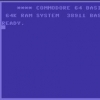Blender-Animations - which hardware?
-
Featured Topics
-
Topics
-
Hendricks3 ·
Posted in Phones and Tablets0 -
Anderson welch ·
Posted in Networking4 -
Gat Pelsinger ·
Posted in Windows2 -
3
-
8
-
frozensun ·
Posted in New Builds and Planning6 -
Brexy9 ·
Posted in Power Supplies6 -
5
-
1
-
whiterook6 ·
Posted in Troubleshooting1
-





.thumb.jpg.ab6821c090888206ddcf98bb04736c47.jpg)













Create an account or sign in to comment
You need to be a member in order to leave a comment
Create an account
Sign up for a new account in our community. It's easy!
Register a new accountSign in
Already have an account? Sign in here.
Sign In Now